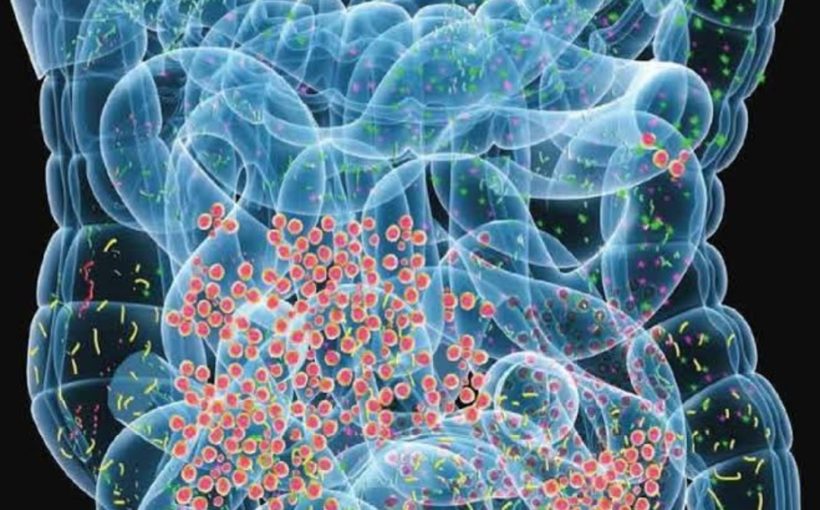Diet can affect which microbes are in the intestinal tract, and research has shown that harmful gut microbiome changes can lead to illnesses such as heart disease, obesity and cancer. Today, scientists will report the development of molecules that can change, or remodel, unhealthful gut microbiomes in mice into more healthful ones. The research could also someday be applied to other conditions related to diet.
The researchers will present their results at the American Chemical Society (ACS) Fall 2019 National Meeting & Exposition. “The gut microbiome contains hundreds of different species of bacteria and is where the largest concentration of bacteria living in us resides,” says M. Reza Ghadiri, Ph.D., leader of the study.
“If we all ate a healthy diet, exercised and didn’t age, we wouldn’t have problems with our gut microbiome and many diseases. But, that’s not how all people live. Current methods aimed at improving the makeup of gut microbiomes have involved prebiotics, probiotics or drug therapies. Our goal was to take a totally new approach—to remodel the microbiome. “The key to the research is a class of molecules called self-assembling cyclic D, L-α-peptides. They were created in Ghadiri’s laboratory originally to kill pathogenic bacteria.
Peptides are short chains of amino acids linked together; they are the building blocks of proteins. Ghadiri’s peptides are not found in nature and have a highly specific mode of activity and selectivity against different bacterial species. “Our hypothesis was that instead of killing bacteria, if we could selectively modulate the growth of certain bacteria species in the gut microbiome using our peptides, more beneficial bacteria would grow to fill the niche, and the gut would be ‘remodeled’ into a healthful gut,” Ghadiri explains. “Our theory was that process would prevent the onset or progression of certain chronic diseases.
“To test this hypothesis, Ghadiri chose cardiovascular disease and used a strain of mice known as LDL receptor knockout mice. “These mice have been bred to thrive on low-fat diets, but when they are fed a diet high in saturated fat—a so-called Western diet—they develop high plasma cholesterol, especially the LDL or ‘bad’ type,” Ghadiri explains. “Within 10 to 12 weeks, they develop plaques in their arteries such as you would find in atherosclerosis patients.”
LDL receptor knockout mice are the “gold standard” to test the effectiveness of statins, which are widely used to reduce cholesterol levels. To find the best peptides to test on the mouse model, the team developed a mass screening assay. The scientists grew a representative mouse microbiome in the lab and then tested various peptides with it. Ghadiri then selected two peptides that appeared to be the most effective for remodeling the mouse gut microbiome into a state resembling the gut microbiome of the mice on a low-fat diet.
The subsequent study included three groups of mice. One group was fed a low-fat diet, another group was fed a Western diet, and a third group was fed a Western diet plus oral doses of one or the other of the two peptides. From fecal samples, the researchers sequenced the gut microbiome from all three groups before and after dosing. They also measured the levels of molecules that affect the immune system, inflammation and metabolism, and examined the animals’ arteries for plaques.
“Mice fed the Western diet with our peptides had a 50% reduction in total plasma cholesterol, and there was no significant plaque in the arteries, compared to the mice fed a Western diet and no peptides,” Ghadiri says. “We also saw suppressed levels of molecules that increase inflammation and rebalanced levels of disease-relevant metabolites. These mice resembled those on a low-fat diet. “The mechanisms by which this takes place most likely involve genes that affect bile acids, which in turn affect the metabolism of cholesterol, as well as other genes that affect inflammatory processes such as atherosclerosis, Ghadiri says.
“This is the first time anyone has shown that there are molecules to purposefully remodel the gut microbiome and turn an unhealthful gut into a more healthful one,” he says. “This opens up clear therapeutic possibilities. We can sequence the guts of individuals and eventually develop therapies.”
Source: American Chemical Society


